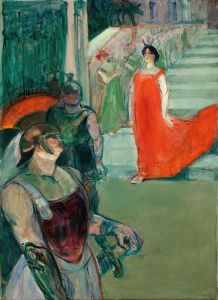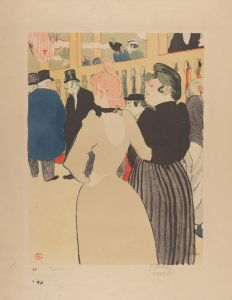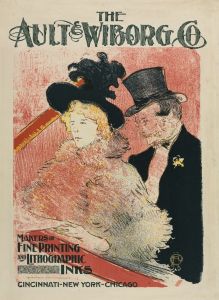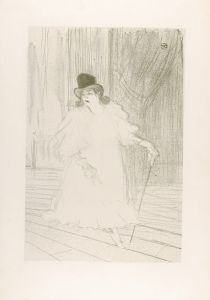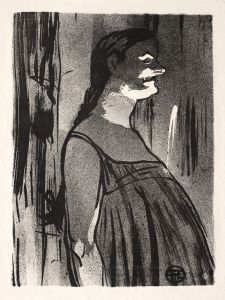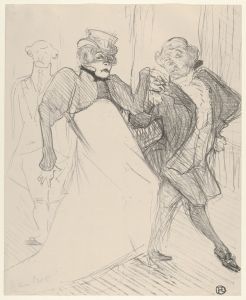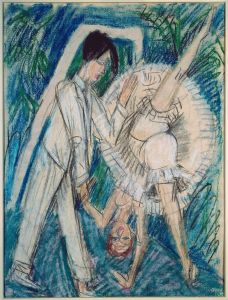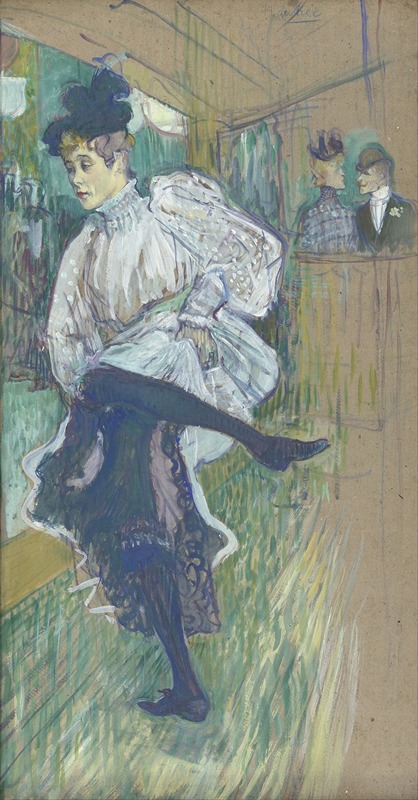
Jane Avril Dancing
A hand-painted replica of Henri de Toulouse-Lautrec’s masterpiece Jane Avril Dancing, meticulously crafted by professional artists to capture the true essence of the original. Each piece is created with museum-quality canvas and rare mineral pigments, carefully painted by experienced artists with delicate brushstrokes and rich, layered colors to perfectly recreate the texture of the original artwork. Unlike machine-printed reproductions, this hand-painted version brings the painting to life, infused with the artist’s emotions and skill in every stroke. Whether for personal collection or home decoration, it instantly elevates the artistic atmosphere of any space.
"Jane Avril Dancing" is a painting by the renowned French artist Henri de Toulouse-Lautrec, created in 1892. Toulouse-Lautrec, a prominent figure in the Post-Impressionist movement, is well-known for his depictions of Parisian nightlife, particularly the vibrant scenes of the Montmartre district. This painting is one of several works by Toulouse-Lautrec that feature Jane Avril, a famous can-can dancer at the Moulin Rouge.
Jane Avril, born Jeanne Beaudon in 1868, was a celebrated dancer known for her unique and expressive style. She became one of the most recognizable figures in the Parisian entertainment scene during the late 19th century. Her association with Toulouse-Lautrec began when he started frequenting the Moulin Rouge, where she performed regularly. Their professional relationship resulted in numerous portraits and posters that captured her dynamic presence and contributed to her enduring legacy.
In "Jane Avril Dancing," Toulouse-Lautrec employs his characteristic style, marked by bold lines, vibrant colors, and a keen sense of movement. The painting captures Avril mid-dance, her body twisted in a lively pose that conveys the energy and excitement of her performance. Toulouse-Lautrec's use of color and line emphasizes the fluidity of her movements and the theatrical atmosphere of the scene.
The background of the painting is relatively simple, allowing the viewer's focus to remain on Avril. Toulouse-Lautrec's technique involves a combination of oil paint and thinned oil washes, which he applied to create a sense of depth and texture. This method also allowed him to work quickly, capturing the immediacy of the moment.
Toulouse-Lautrec's portrayal of Jane Avril is notable for its sensitivity and insight. Unlike many of his contemporaries, who often depicted dancers in a more superficial or idealized manner, Toulouse-Lautrec's works reveal a deeper understanding of his subjects. He was able to convey not only the physicality of Avril's dance but also her personality and the emotions behind her performances.
"Jane Avril Dancing" is part of a larger body of work by Toulouse-Lautrec that documents the bohemian lifestyle of Paris during the Belle Époque. His paintings, posters, and prints provide a vivid snapshot of this vibrant period in French history, characterized by artistic innovation and cultural change. Toulouse-Lautrec's work, including his depictions of Jane Avril, has had a lasting impact on the art world and continues to be celebrated for its originality and expressiveness.
Today, "Jane Avril Dancing" is housed in the Musée d'Orsay in Paris, where it remains a popular attraction for visitors. The painting is a testament to Toulouse-Lautrec's skill as an artist and his ability to capture the essence of his subjects. It also serves as a reminder of the enduring appeal of Jane Avril and the lively world of the Moulin Rouge.





